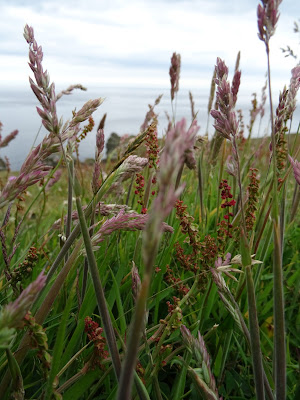Our guillemots and their chicks have now left the cliffs, but today a couple of visitors made comment of the likeness of guillemots to penguins, and asked the difference between the two species. The first thing I could think of is the fact that penguins can't fly. This then lead to an obvious follow up question; why can't penguins fly, but guillemots can?
Biomechanical research has shown that whilst in flight, guillemots expend the highest amount of energy reported for a fly...ing bird! The energy demands are 31 times greater than the energy they expend when at rest. These little birds are clearly at home in the water, as they use substantially less energy than most other birds when they are diving.
It appears that for penguins, the story is a similar one. At some point in history, flight simply became unsustainable due to the very high energy costs, and the birds became flightless. Perhaps one day the guillemot will also be flightless? Who knows.
To quote an energetics researcher, "Good flippers don't fly well". Jill
Biomechanical research has shown that whilst in flight, guillemots expend the highest amount of energy reported for a fly...ing bird! The energy demands are 31 times greater than the energy they expend when at rest. These little birds are clearly at home in the water, as they use substantially less energy than most other birds when they are diving.
It appears that for penguins, the story is a similar one. At some point in history, flight simply became unsustainable due to the very high energy costs, and the birds became flightless. Perhaps one day the guillemot will also be flightless? Who knows.
To quote an energetics researcher, "Good flippers don't fly well". Jill


























